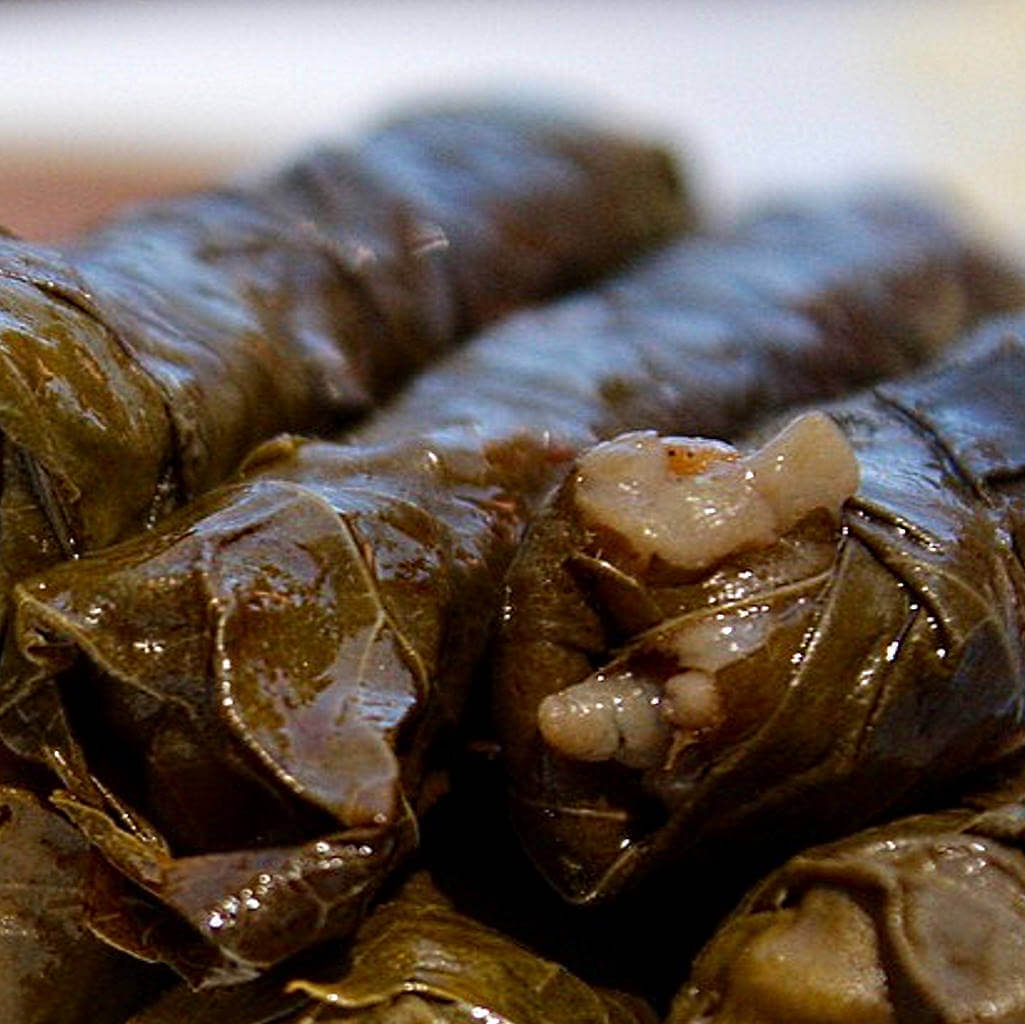Stuffed Grape Leaves – history, preparation, and cultural significance of Yaprak Sarma.
Stuffed Grape Leaves (Yaprak Sarma): A Culinary Delight
Stuffed grape leaves, also known as Yaprak Sarma, are a staple in many Mediterranean and Middle Eastern cuisines. This delicacy, often served as an appetizer or main course, is a testament to the rich culinary traditions of these regions. This article delves into the history, preparation, and cultural significance of Yaprak Sarma.
History of Yaprak Sarma
The origins of Yaprak Sarma can be traced back to the Ottoman Empire, which spanned three continents and influenced numerous cuisines. The dish’s name, “Yaprak Sarma,” is of Turkish origin, with “yaprak” meaning leaf and “sarma” meaning wrapped or rolled. This dish was a favorite among the Ottoman elite and was often served during lavish feasts and celebrations.

Preparation of Yaprak Sarma
Yaprak Sarma is prepared by stuffing grape leaves with a mixture of rice, onions, herbs, and sometimes meat. The leaves are then rolled into small cylindrical shapes and cooked until tender. The stuffing can vary based on regional preferences. For instance, in Greece, they are often prepared with a mixture of rice, pine nuts, and raisins, while in Lebanon, they are typically stuffed with rice and ground lamb.
Step 1: Prepare the Grape Leaves
- Bring a large pot of water to a boil.
- Carefully immerse the grape leaves in the boiling water and blanch them for about 1-2 minutes, or until they become soft and pliable. This step helps to make the leaves easier to work with and ensures they are tender when cooked.
- Once softened, remove the grape leaves from the boiling water and immediately transfer them to a bowl of ice water to stop the cooking process. This helps to retain their vibrant green color and prevents them from becoming too mushy.
Step 2: Prepare the Stuffing
- Finely chop the onions and herbs, such as dill, mint, and parsley.
- Heat a tablespoon of olive oil in a skillet over medium heat. Add the chopped onions and sauté them until they turn translucent and fragrant, usually for about 5-7 minutes.
- Add the chopped herbs to the skillet and cook them briefly until they release their aroma.
- Rinse the rice under cold water until the water runs clear to remove excess starch. Add the rinsed rice to the skillet and stir well to combine with the onions and herbs.
- If using ground meat, add it to the skillet and cook until browned, breaking it apart with a spoon as it cooks. This step adds extra flavor and protein to the stuffing.
- Season the mixture with salt and pepper to taste. Optionally, you can add pine nuts and raisins for additional texture and sweetness.
Step 3: Stuff and Roll the Grape Leaves
- Lay a grape leaf flat on a clean work surface, vein side up, with the stem end facing you.
- Place a spoonful of the prepared stuffing near the stem end of the leaf.
- Fold the sides of the leaf over the stuffing, then roll it tightly from the stem end to the tip, forming a compact roll.
- Repeat the process with the remaining grape leaves and stuffing mixture, placing the rolled grape leaves seam side down to prevent them from unraveling during cooking.
Step 4: Cook the Yaprak Sarma
- Arrange the stuffed grape leaves in a large pot, placing them snugly next to each other to prevent them from opening during cooking.
- Pour enough water or broth over the Yaprak Sarma to cover them completely.
- Place a heatproof plate or lid directly on top of the grape leaves to weigh them down and keep them submerged in the liquid.
- Bring the liquid to a simmer over medium heat, then reduce the heat to low and cover the pot. Allow the stuffed grape leaves to simmer gently for about 45-60 minutes, or until the rice is cooked through and the grape leaves are tender.
- Once cooked, remove the Yaprak Sarma from the pot using a slotted spoon and arrange them on a serving platter.
- Serve the stuffed grape leaves warm or at room temperature, garnished with lemon wedges if desired. Enjoy your delicious and flavorful dolmas!

Cultural Significance of Yaprak Sarma
Yaprak Sarma is more than just a dish; it’s a symbol of hospitality and tradition in many cultures. In Turkey, for example, it’s a common practice to prepare Yaprak Sarma when expecting guests. The dish is also a staple during special occasions and religious festivals. In Greece, it’s often served during the Easter celebrations, while in Lebanon, it’s a common sight during the holy month of Ramadan.
Moreover, the preparation of Yaprak Sarma is often a communal activity, bringing together family members and friends. The process of stuffing and rolling the leaves is time-consuming and labor-intensive, making it a perfect opportunity for socializing and bonding.
Nutritional Value of Yaprak Sarma
Aside from its delicious taste, Yaprak Sarma is also packed with nutrients. Grape leaves are rich in vitamins A and C, as well as iron and fiber. When stuffed with rice and meat, the dish becomes a good source of carbohydrates and protein. Moreover, the herbs used in the stuffing, such as dill, mint, and parsley, have various health benefits, including aiding digestion and boosting immunity.
Stuffed grape leaves, or Yaprak Sarma, is a culinary gem that reflects the rich history and culture of the Mediterranean and Middle Eastern regions. Its preparation, which often involves communal cooking, symbolizes hospitality and tradition. Moreover, it’s a nutritious dish that offers a variety of flavors and textures. Whether served as an appetizer or a main course, Yaprak Sarma is a testament to the diversity and richness of these culinary traditions.










